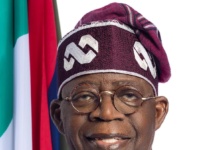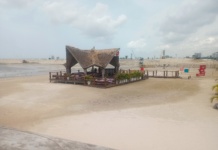By Peter Olorunnisomo – A developing nation of Mozambique’s stature could definitely do well with the exploiting the natural endowments within the confines of its geo-sphere – natural and human. But reports have it that the state’s number one export is, arguably, heroin.

The country is noted for being is a significant heroin transit centre and the trade has increased to 40 tonnes or more per year, making it a major export which contributes up to $100 million per year to the local economy. For 25 years the trade has been controlled by a few local trading families and tightly regulated by senior officials of Frelimo, the ruling party, and has been largely ignored by the international community which wanted to see Mozambique as a model pupil.
It appears that there is a shift to a second channel, not so tightly controlled by the old trading families and the ruling party. The global move toward the gig economy and the broader corruption of Mozambican police and civil service makes it easier to organise alternative channels, with local people hired by WhatsApp and BlackBerry for specific tasks.
This significant shift from socio-cultural impartation to a negative ‘socio-developmental’ has the country standing on the brink of self destruction. It goes without saying that where drug lords rule, the cartel syndrome flourishes and there is an automatic breakdown of law and order. In effect, we cannot necessarily be expecting a composite thrust in governance for the people and the rule of the constitution will certainly be corrupted.
Mozambique is a key link in a complex chain which forms the east African heroin network. Heroin goes from Afghanistan to the Makran coast of Pakistan, and is taken by dhow to northern Mozambique. There, the Mozambican traffickers take it off the dhows and carry it to the coast, and then move it more than 3000 km by road to Johannesburg. From there others ship it to Europe.
The Mozambique heroin context became the background paper for “Tackling heroin trafficking on the East African coast” by Simone Haysom, Peter Gastrow and Mark Shaw of the Global Initiative Against Transnational Organized Crime.
The study has it that heroin has been one of Mozambique’s largest exports for two decades and the trade is increasing. Heroin is produced in Afghanistan and shipped through Pakistan, then moved by sea to east Africa and particularly northern Mozambique.
From there it is taken by road to Johannesburg, from which it is sent to Europe. This basic route has remained unchanged for 25 years. Estimates vary from 10 to 40 tonnes or much more of heroin moving through Mozambique each year. With an export value of $20 million per tonne. The drug is probably the country’s largest or second largest export (after coal). It is estimated that more than $2 million per tonne stays in Mozambique, as profits, bribes, and payments to senior Mozambicans.
When the drug arrives off the coast, the Mozambican role is to take it from the dhows, move it by small boat to the coast and then by road to warehouses, and finally take it by road 3000 km to Johannesburg, South Africa. The 10-40 t/y estimate is from dhows only, and further significant amounts of heroin also arrive in containers of other imports, particularly at the northern port of Nacala.
Until recently, the trade was carried out by south-Asian-origin families based in the north of Mozambique and was tightly regulated by the most senior figures in Frelimo. The trade has been well known since 2001 when an article was published in Metical, and it said heroin was then Mozambique’s largest export. Frelimo regulation means there have been no drug wars between the trading families, and little heroin remains in Mozambique. With one exception (the United States in 2009-10), the international community has chosen to ignore the regulated heroin trade – other issues ranging from natural gas to corruption have been seen as more important.
Heroin production is increasing in Afghanistan. But tighter control of transit through eastern Europe is moving the trade to southern routes, and more controls in Kenya and Tanzania has moved sea landings south to northern Mozambique. The trade appears to be increasing significantly. This, in turn, led to an investigation by the Geneva-based Global Initiative against Transnational Organized Crime, just published: “The Heroin Coast: The state has grown a political economy of heroin trafficking along the eastern African seaboard. The report argues that the heroin trade has “political protection” and that “in Mozambique, we find a tight integration between ruling party figures and traffickers.” The report continues: “individuals in Frelimo have become implicated in criminal activities, and … the party’s own system for generating funds relies on a lack of the rule of law.”
The implication of ‘peace’ suggests a strong coercion effectively backed by a political will that legalises its protection. Consequently, as the report would suggest, it cannot be said that the drug is not fuelled to neighbouring African states whether far or near.
In the year that the African Union is gaining strides in unifying the economic purposes and shoring up intra and intercontinental alliances, a booming trade of this magnitude in heroin will compromise the development of African states starting with its peoples. If this is not a ‘security’ issue, it remains a wonder what else could be when this is ‘death’ on the African highways.
Kindly follow us on twitter:@AfricanVoice2








